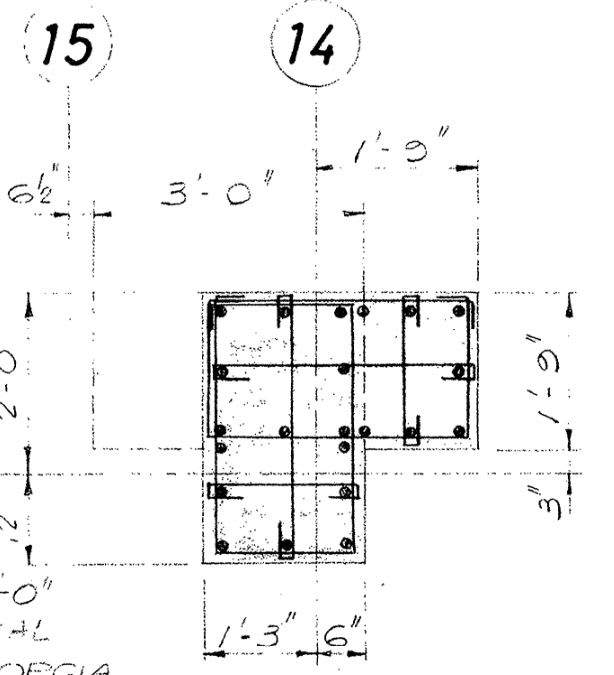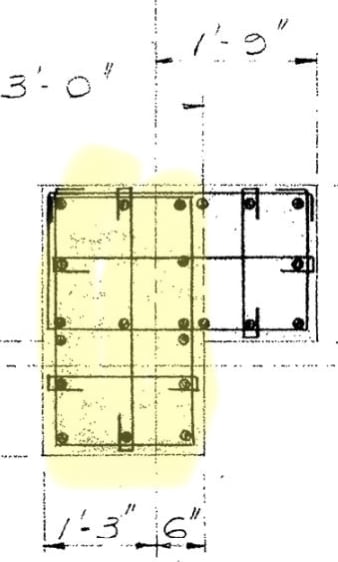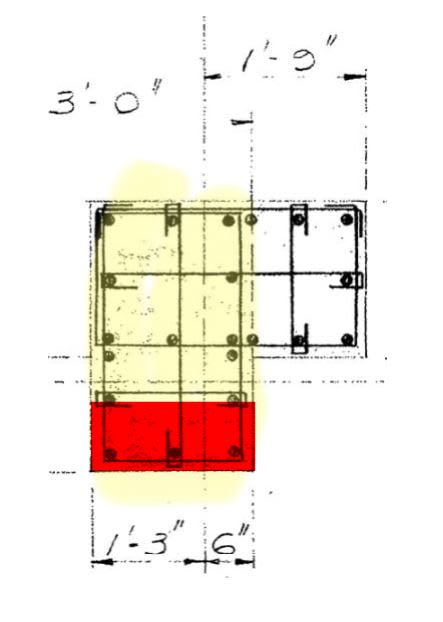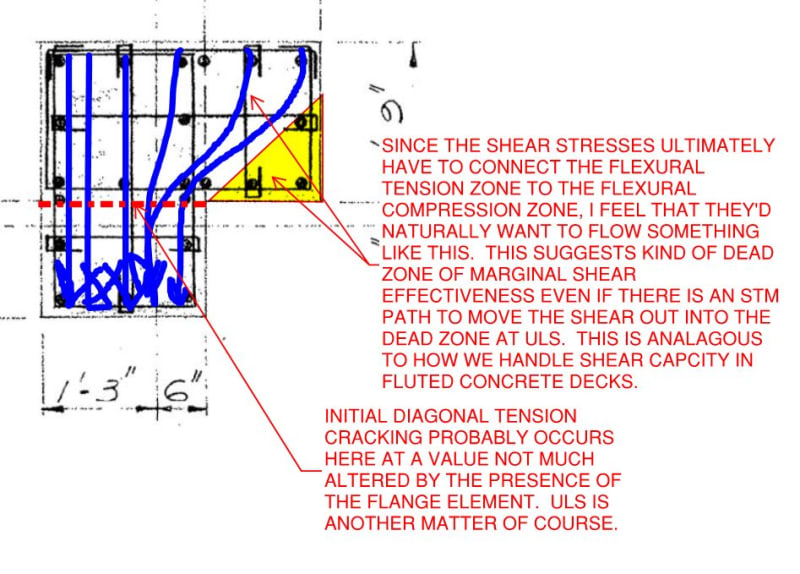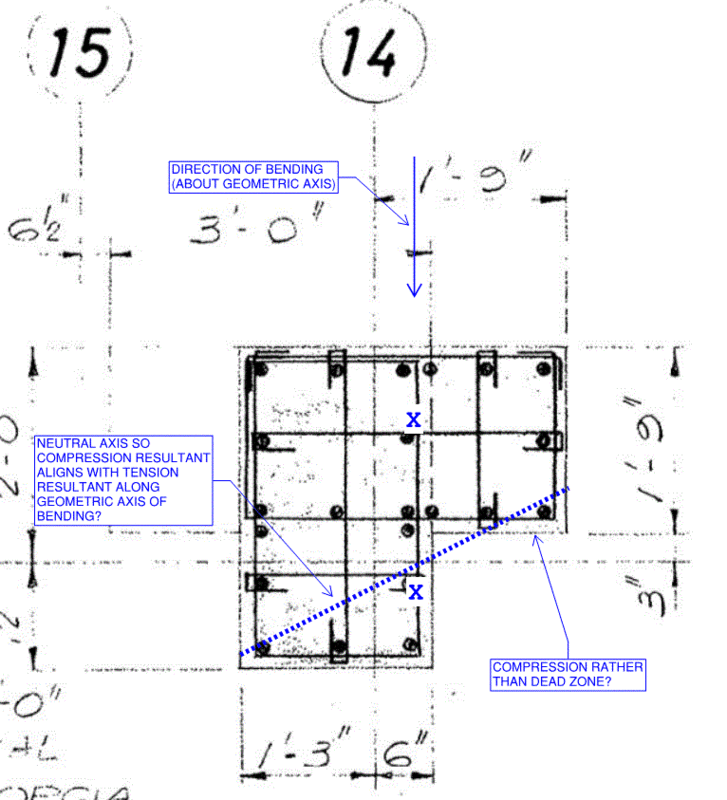I found this thread searching for something else and remembered I wanted to reply but didn’t get around to drawing the necessary pictures. It may have been reckless to say that you can just add the big rectangle and small rectangle as though they were separate columns as I can’t prove it; just relying on the idea that a composite structure should be as strong as the sum of its parts. I’m always looking to learn about exceptions though and wanted to prompt the discussion that was developing.
In this post, when I refer to an axis I mean a geometric axis. I don’t think the principal axes of the gross section are too relevant after cracking and due to the stirrup orientation. I’m also ignoring any shear lag as the outstand is quite stocky. And referring to the posted geometry in particular as trying to cover all possible shapes and reinforcement layouts would be next to impossible.
First off, this (correct) principle: “a disproportionate share of the shear resistance comes from the compression zone [KootK]”. If we compare the single-rectangle simplification to the L-shape reality, the L-shape has ~double the reinforcement so ~double the compression zone. This doesn’t double the shear capacity but, for this geometry, adding in the small rectangle would only increase the shear capacity by ~40% at a guess (depending on which code you work to). That’s not too far off what you would get based on the increased reinforcement quantity applied just to the larger rectangle.
Next, I’d like to look at the case posted by KootK in relation to the idea that the column can be treated as two rectangles for the two geometric directions. For the compression block with the neutral axis parallel to the geometric axis, this would actually be biaxial bending because of the offset between the compression resultant and the tension resultant as shown in the image below. Whilst I’m not saying the two-rectangles idea would necessarily say the section passes when it actually fails, the capacity for the smaller shear force direction may be overestimated if the concrete contribution is taken in full, as there is no compression block in that rectangle. Maybe there’s a bending plane where this does become critical (closer to 45 degrees).
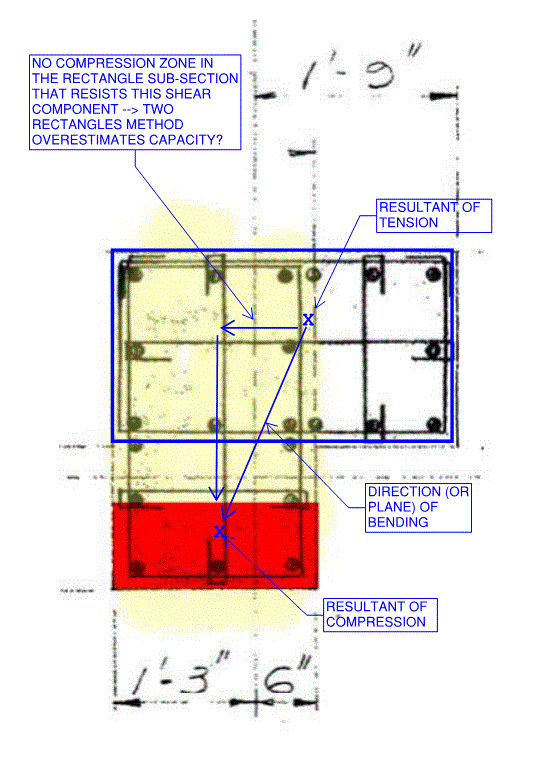
Last, I’ll put forward bending confined to a geometric axis, for comparison to uniaxial bending/shear that only engages one of the rectangles. I believe that the neutral axis would be tilted so that the compression and tension resultants are aligned, causing some compression in the outstand as shown and an increase in capacity of some amount compared to just the larger rectangle.
